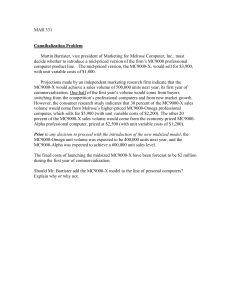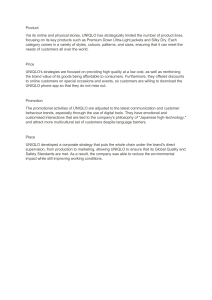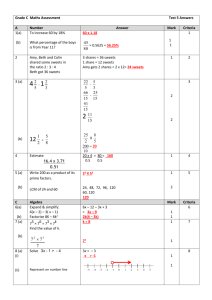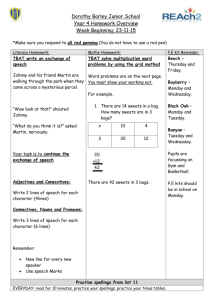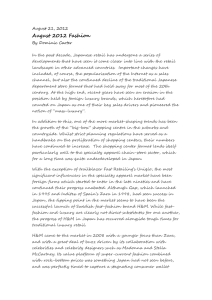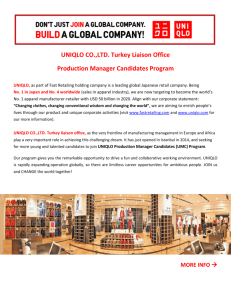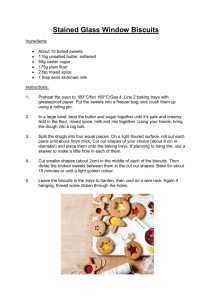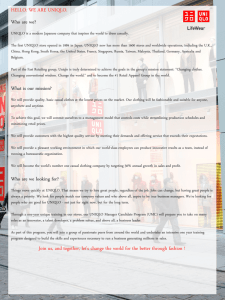2009.03.02 Amidst the Gloom, Some Rays of Light
advertisement
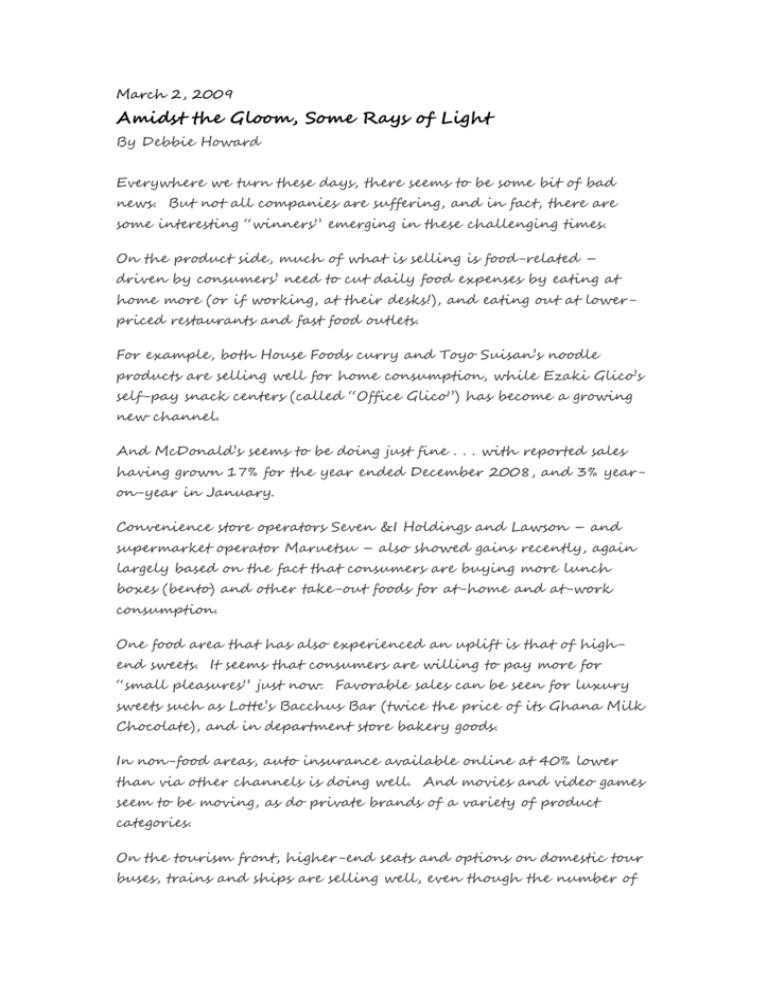
March 2, 2009 Amidst the Gloom, Some Rays of Light By Debbie Howard Everywhere we turn these days, there seems to be some bit of bad news. But not all companies are suffering, and in fact, there are some interesting “winners” emerging in these challenging times. On the product side, much of what is selling is food-related – driven by consumers’ need to cut daily food expenses by eating at home more (or if working, at their desks!), and eating out at lowerpriced restaurants and fast food outlets. For example, both House Foods curry and Toyo Suisan’s noodle products are selling well for home consumption, while Ezaki Glico’s self-pay snack centers (called “Office Glico”) has become a growing new channel. And McDonald’s seems to be doing just fine . . . with reported sales having grown 17% for the year ended December 2008, and 3% yearon-year in January. Convenience store operators Seven &I Holdings and Lawson – and supermarket operator Maruetsu – also showed gains recently, again largely based on the fact that consumers are buying more lunch boxes (bento) and other take-out foods for at-home and at-work consumption. One food area that has also experienced an uplift is that of highend sweets. It seems that consumers are willing to pay more for “small pleasures” just now. Favorable sales can be seen for luxury sweets such as Lotte’s Bacchus Bar (twice the price of its Ghana Milk Chocolate), and in department store bakery goods. In non-food areas, auto insurance available online at 40% lower than via other channels is doing well. And movies and video games seem to be moving, as do private brands of a variety of product categories. On the tourism front, higher-end seats and options on domestic tour buses, trains and ships are selling well, even though the number of domestic tourists is down overall, again pointing up a trend for consumers to “trade up” for the sake of having a small luxury, as with higher-end sweets. And business hotels that are slightly upscale and larger than average are providing a nice alternative to those who might otherwise stay at pricier hotels – and those who would like something a notch up from old-style business hotels. Even in the retailing sector, where many players are suffering, there are some very bright spots. Apparel retailer Uniqlo, for example, experienced its third consecutive month of year-on-year increases in January, with store traffic improving by 6%. The company reportedly has plans to open larger new stores, both in Japan and abroad. In the normally “high-end only” Ginza, one can see the advent of mid-priced marketers such as new market entrant H&M from Europe, as well as market veteran Uniqlo. Near the Ginza (Chuo Dori and JR Yurakucho Station), several new mid-priced shopping centers offer casual clothes and other products from shops such as Tokyu Hands, and they are attracting notable traffic. In addition to selected mid-priced retailers and convenience stores, online sales are also doing well as a distribution channel. Rakuten, long known as Japan’s leading online retailer, has experienced brisk sales during the downturn through its virtual online mall – for everything from seasonings for home cooking, boxed lunches, women’s apparel, PCs and home electronics. I would venture to say that Japanese consumers, “hardened” by the long-term economic doldrums they experienced from the early 90s to mid-2000s, are probably in better psychological shape than their Western counterparts in this challenging economic situation, and are gearing down their lifestyles with relative grace.
